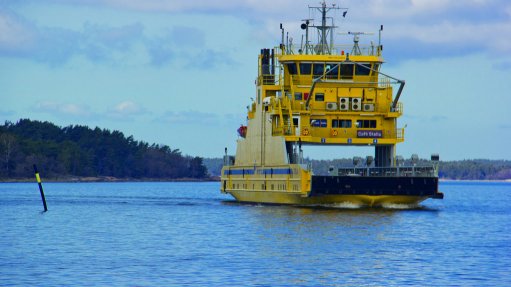
RC SHIPPING A series of sensor tests will be conducted on board the 65-m-long Stella
Integrated power and propulsion systems company Rolls-Royce last month unveiled its vision to make remote and autonomous shipping a reality as part of its Advanced Autonomous Waterborne Applications Initiative (AAWA) project.
The company states that the project will change the nature of the shipping industry, with the project’s first-year findings presented at a conference in Helsinki, Finland, last month.
Speaking at the conference, Rolls-Royce Marine president Mikael Makinen said autonomous shipping was the future of the maritime industry. “The smart ship will revolutionise the landscape of ship design and operations.”
Remote and autonomous ships could potentially redefine the maritime industry and the roles of the players involved, said Turku School of Economics Centre for Collaborative Research development manager Jouni Saarni. He added that such an activity would also have implications for shipping companies, shipbuilders and maritime systems providers, as well as technology companies from other sectors, especially automotive.
Constant real-time remote monitoring of vessels worldwide will result in ships becoming more closely integrated into logistics or supply chains, enabling global companies to focus on using a whole fleet to its best potential, thereby generating cost savings and improving revenue generation.
This has the potential to create new shipping services, such as online cargo service marketplaces, more efficient pooling and leasing of assets, and new alliances. Some of these services will support existing role-players in the market, thereby enabling new role-players to enter and potentially capture a significant share of the business.
According to the leaders of the project’s technology research – which includes University of Turku Technology Research Centre senior research fellow Jonne Poikonen and Tampere University of Technology senior research fellow Dr Mika Hyvönen – the technologies needed to make remote and autonomous ships a reality exist. They noted that the sensor technology needed is sound and commercially available, and the algorithms needed for robust decision support systems – the vessel’s ‘virtual captain’ – are not far away. The challenge, however, is to find the best way to combine them cost-effectively in a marine environment, they added.
A series of tests of the sensor arrays in a range of operating and climatic conditions will be carried out in Finland in the coming months. Those tests will be conducted on board Finnish ferry service provider Finferries’ 65-m-long, double-ended ferry, the Stella, which operates between Korpo and Houtskär.
The project is also exploring how to combine existing communication technologies in an enhanced way for autonomous ship control. The project has created a simulated autonomous ship control system, which will be connected to a satellite communications link and land-based systems, and will allow for the behaviour of the complete communications system to be explored.
Regulatory Approval
To secure regulatory approval will require the support of shipowners, operators and seafarers, as well as wider public acceptance. The operation of remote and autonomous ships will need to be at least as safe as existing vessels.
According to the project’s safety strand leader, Aalto University senior research scientist Risto Jalonen, the marine industry has some experience of systematic and comprehensive risk assessments. However, when new or emerging technology is involved, a wider and deeper understanding of a new and changed risk portfolio, with a variety of known and unknown hazards, were needed, he said. “The AAWA project is identifying and exploring these hazards and developing approaches to tackle them.”
Cybersecurity will also be critical to the safe and successful operation of remote and autonomous vessels. The project is identifying and adapting current best practice from a range of industries for application in the marine environment.
The results of such studies will be used to make recommendations to regulators and classification societies to support the development of standards for remote and unmanned vessel operation.
Such rules are vital to the development of remote and autonomous ships, according to the project’s legal strand leader and Åbo Akademi University adjunct professor, Dr Henrik Ringbom. He added that for remote and autonomous shipping to become a reality, efforts at all regulatory levels were required.